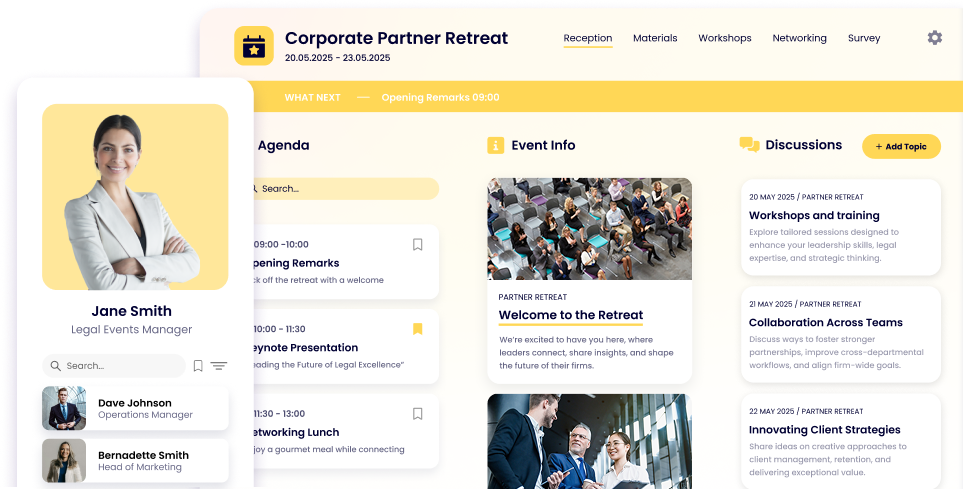12 Steps for Successful Conference Planning

Lisa Broom | Head of Marketing

Planning a conference involves many moving parts – from defining your goals to booking the right venue, and everything in between. This guide provides practical tips to help you navigate these challenges and ensure your event runs smoothly.
Key Takeaways: Conference Planning Checklist
- Define clear conference goals and measurable outcomes
- Assemble a dedicated team with assigned roles
- Utilize strong marketing strategies, including early bird discounts
- Select the right venue and secure quality speakers
- Use technology for registration and attendee engagement
1. Define Your Conference Goals

Defining your goals from the outset is key to a successful conference. Clear objectives guide your strategy and align all planning decisions.
Identify the Purpose
Start by identifying the primary purpose: education, networking, branding, or lead generation. Documenting these goals ensures alignment across all planning activities.
Set Measurable Outcomes
Establish targets for attendee numbers, engagement, and revenue. Use tools like live polls and networking apps to boost participation.
Align with Organizational Goals
Make sure your conference supports broader organizational objectives to gain internal support and resources.
2. Assemble a Dedicated Team
A strong planning team ensures no detail is overlooked.
Assign Key Roles
Designate roles like project manager, logistics coordinator, and marketing lead. Clear responsibilities ensure smooth collaboration.
Regular Communication
Schedule regular check-ins and use email marketing tools to keep everyone aligned.
Utilize Management Tools
Use project management software, CRM systems, and task trackers to streamline operations and improve accountability.
3. Choose the Right Theme and Format
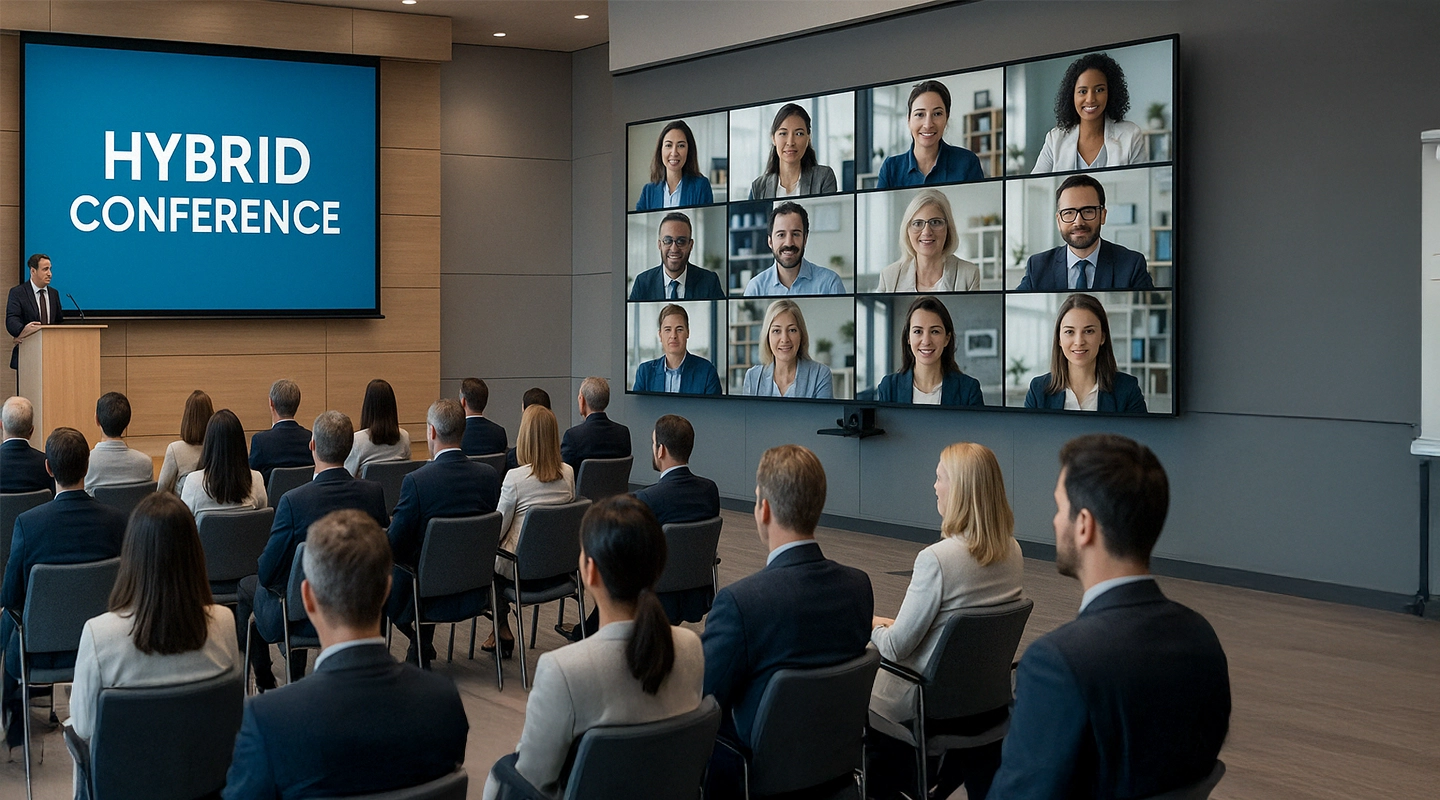
The theme and format shape the entire conference experience.
Develop a Unique Theme
Create a compelling theme that reflects your brand and attracts your audience.
Decide on the Format
Choose in-person, virtual, or hybrid formats based on audience preferences and logistical capabilities.
Incorporate Branding Elements
Use consistent logos, fonts, and colors for visual cohesion and brand recognition.
4. Budget Planning
A detailed budget helps control costs and avoid surprises.
Identify Fixed Costs
Account for venue rental, speaker fees, and marketing.
Plan for Variable Costs
Include catering, AV rentals, and printed materials. Look for cost-saving opportunities.
Allocate Contingency Funds
Set aside funds for unexpected costs and review all contract terms carefully.
5. Selecting and Booking a Venue
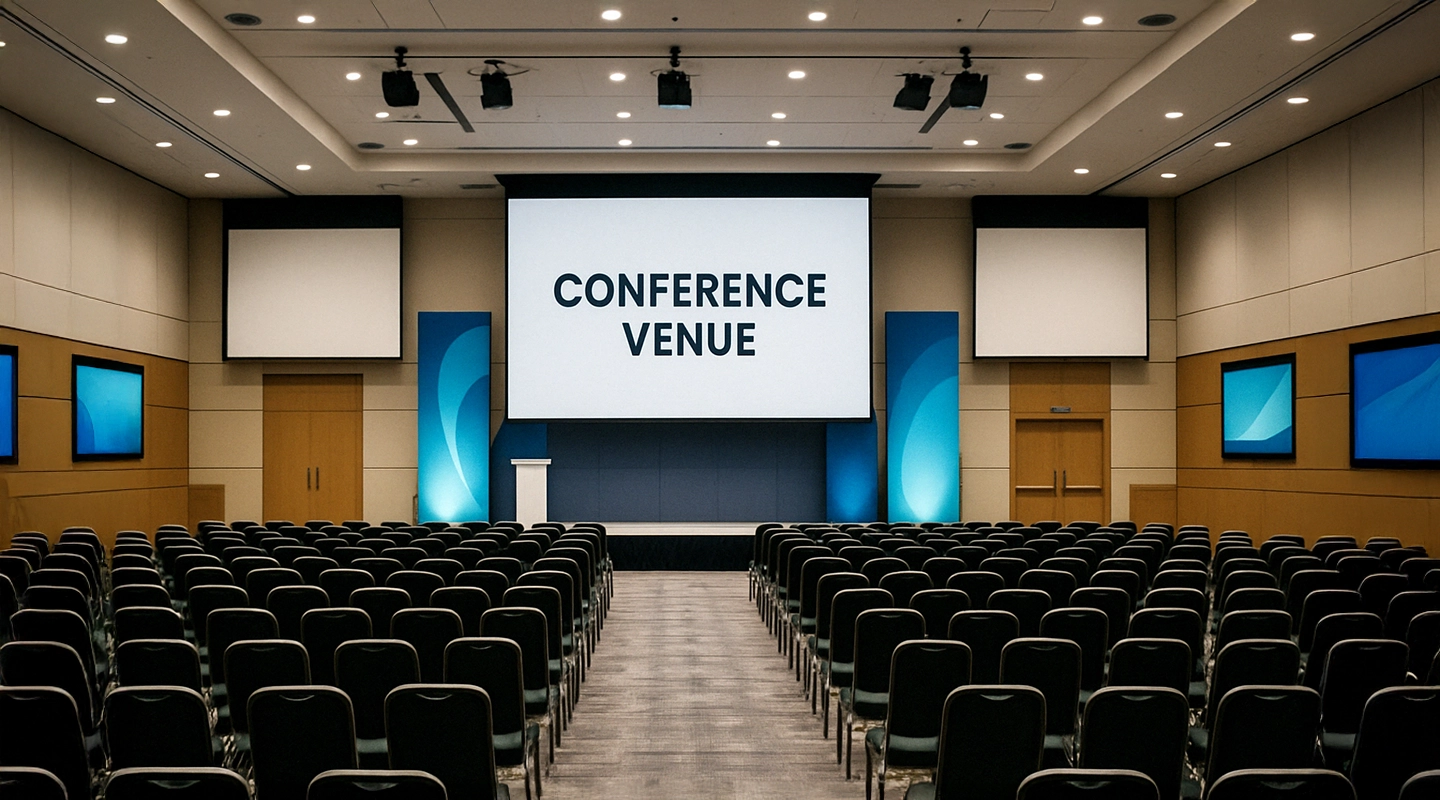
Choose a venue that supports your event goals and audience size.
Evaluate Venue Options
Consider capacity, amenities, location, and accessibility.
Confirm Availability
Book early to avoid scheduling conflicts and maintain communication with venue staff.
Negotiate Contracts
Review terms to ensure flexibility and favorable pricing.
6. Finding and Securing Speakers
Quality speakers enhance your event’s credibility.
Identify Thought Leaders
Reach out to industry experts through referrals or speaker agencies.
Secure Commitments Early
Book speakers early to confirm availability and set expectations.
Provide Speaker Guidelines
Share clear logistics, presentation formats, and content expectations.
7. Developing a Detailed Schedule
A structured schedule improves attendee experience and logistics.
Outline Key Sessions
Include workshops, panels, and breakout sessions. Assign timekeepers for each session.
Allow for Networking
Add scheduled breaks and use networking apps to encourage interaction.
Update Regularly
Use digital tools for real-time updates and last-minute changes.
8. Marketing and Promotion
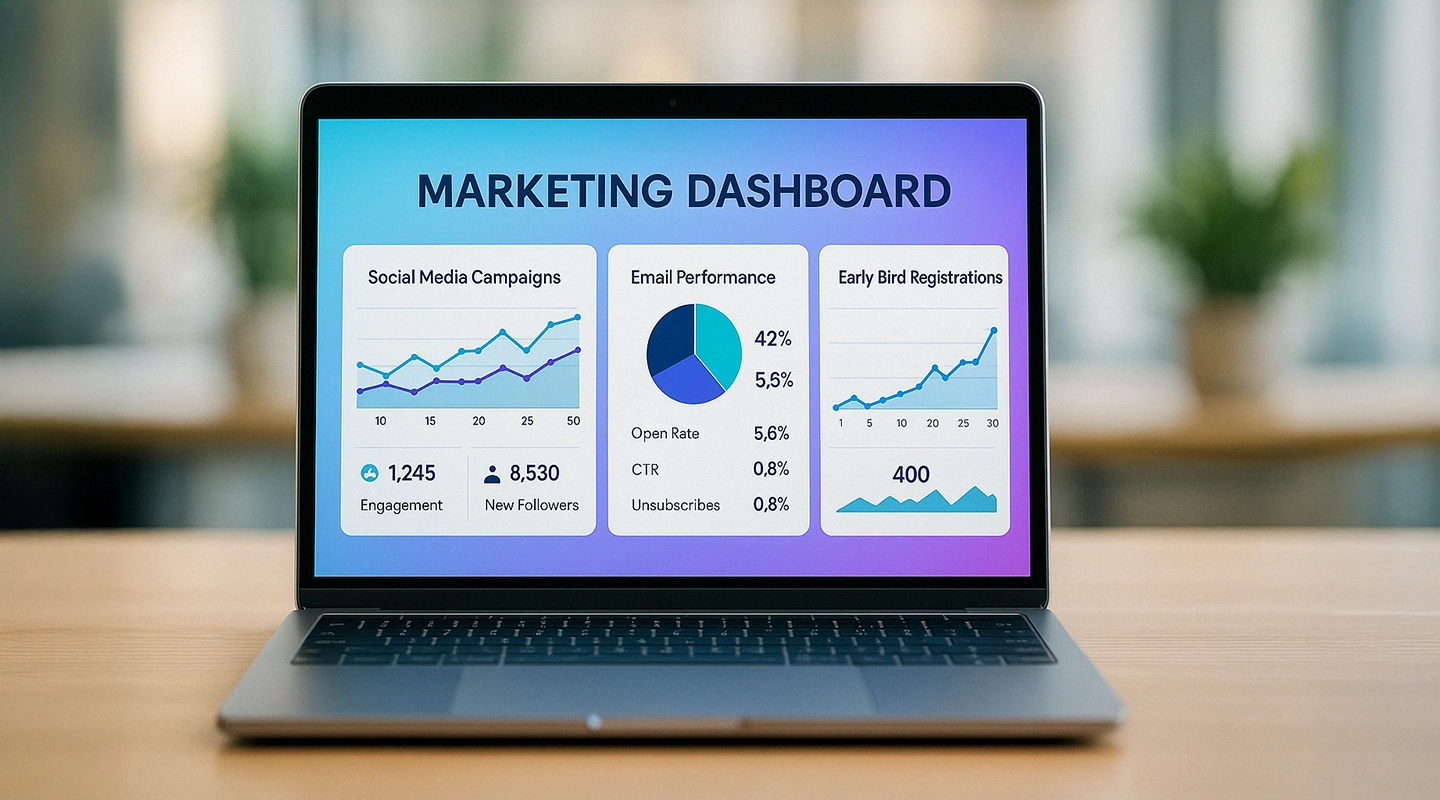
Effective marketing increases attendance and builds excitement.
Utilize Multiple Channels
Promote via social media, email, and partner networks. Use contests and giveaways to boost interest.
Highlight Unique Selling Points
Emphasize big-name speakers, cutting-edge content, or exclusive networking.
Offer Early Bird Discounts
Encourage early registration with limited-time pricing.
Stat: Events with early bird pricing sell 26% more tickets on average.
Source: https://www.eventbrite.com/blog/early-bird-pricing-benefits-ds00/
9. Registration and Check-In
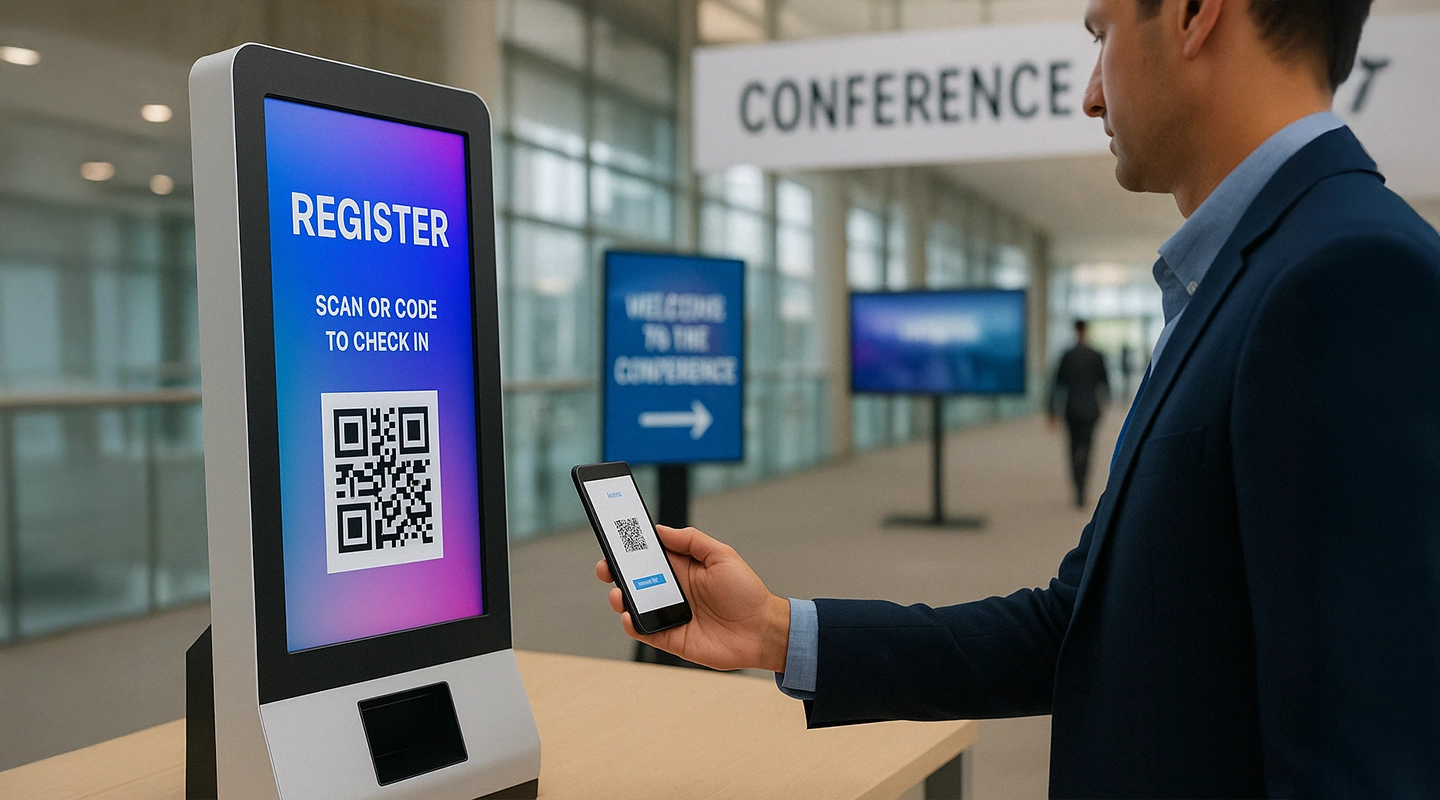
Simplify the process for attendees from the start.
Simplify Registration
Embed forms on your website and provide step-by-step instructions.
Use Technology
Utilize QR codes and self-service kiosks to reduce wait times.
Provide Support
Ensure on-site help and accessible registration options for all attendees.
10. Engaging Attendees
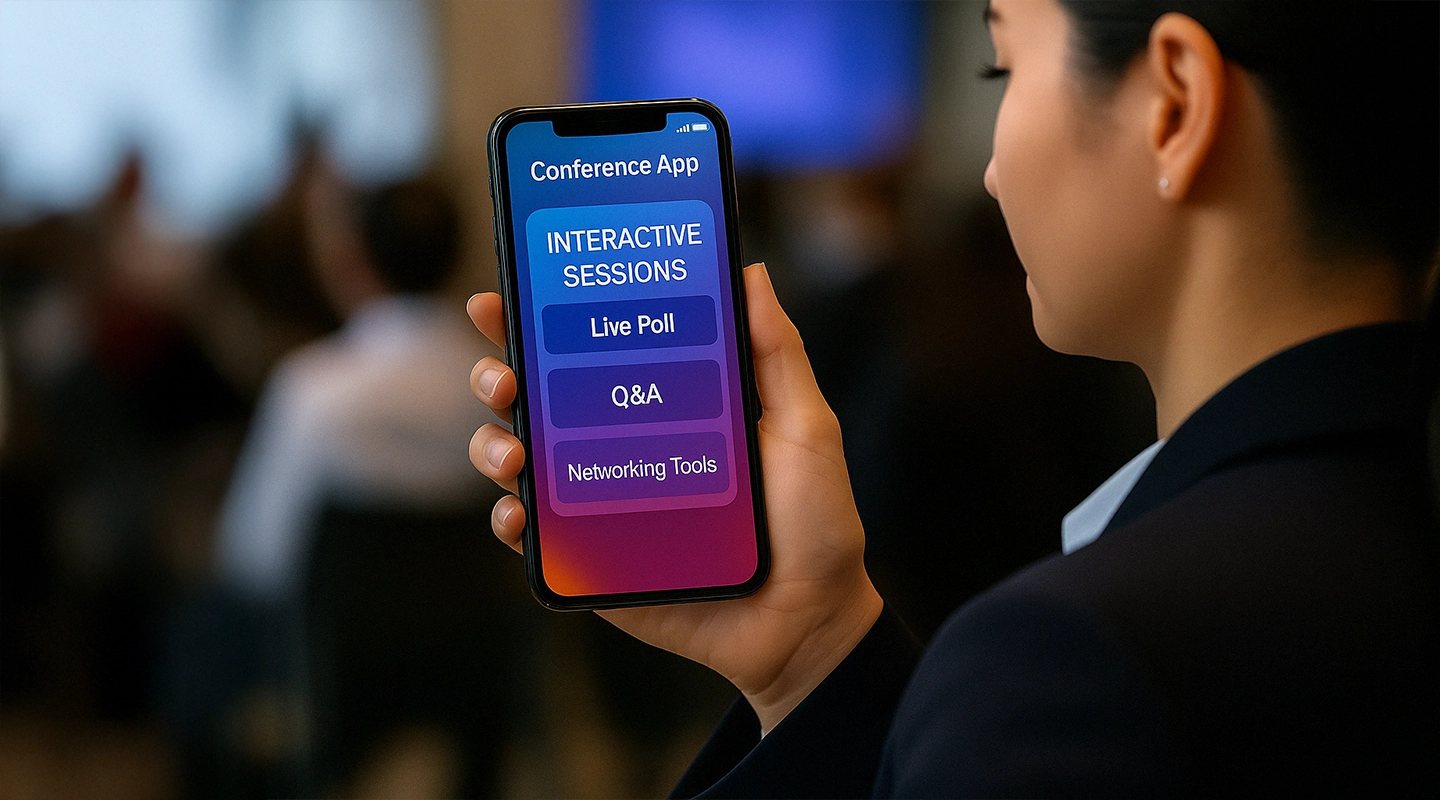
Engagement drives satisfaction and retention.
Interactive Sessions
Incorporate live polls, Q&A, and gamification to energize sessions.
Networking Tools
Use event apps to allow contact sharing and meeting scheduling.
11. Follow-Up Activities
Keep momentum going post-event.
- Send daily recaps during multi-day events.
- Create a post-event mailing list.
- Share photos, recordings, and next steps.
12. Post-Conference Evaluation
Use feedback to measure success and plan improvements.
Collect Feedback
Send surveys within 48 hours to attendees, sponsors, and speakers.
Analyze Data
Review engagement metrics, attendance numbers, and survey results.
Stat: 91% of organizers say feedback is essential to event success.
Source: https://www.markletic.com/blog/event-feedback-statistics/
Plan for Future Events
Use findings to refine planning, improve future experiences, and demonstrate ROI.
Summary
Planning a successful conference requires meticulous attention to detail and a comprehensive strategy. From defining your goals and assembling a dedicated team to selecting the right venue and engaging attendees, each step plays a vital role. With continuous improvement and tools like Fliplet for Conference apps, you can create standout events that encourage lasting connections.
FAQs
What are the first steps in planning a conference?
Start by clearly defining your conference goals and purpose to ensure everything aligns with your organizational objectives. This foundational step will guide all other planning efforts, setting you up for success!
How can I ensure a smooth registration process?
To ensure a smooth registration process, simplify it by embedding the registration form on your event website and using user-friendly tools like QR codes and self-service kiosks. Clear instructions and support will also enhance the experience for everyone involved.
What should be included in a conference budget?
To create a successful conference budget, ensure you account for fixed costs like venue and speaker fees, variable costs such as catering and AV rentals, along with a contingency fund for unexpected expenses. This thorough planning will lead to a well-organized and impactful event!
How do I keep attendees engaged during the conference?
To keep attendees engaged during the conference, incorporate interactive sessions and networking tools while planning follow-up activities to strengthen relationships. This approach will create an energetic atmosphere that attendees will appreciate!
Why is post-conference evaluation important?
Post-conference evaluation is crucial as it provides valuable insights into the event’s effectiveness and highlights opportunities for enhancement. Embracing this feedback can elevate your future events to new heights!





